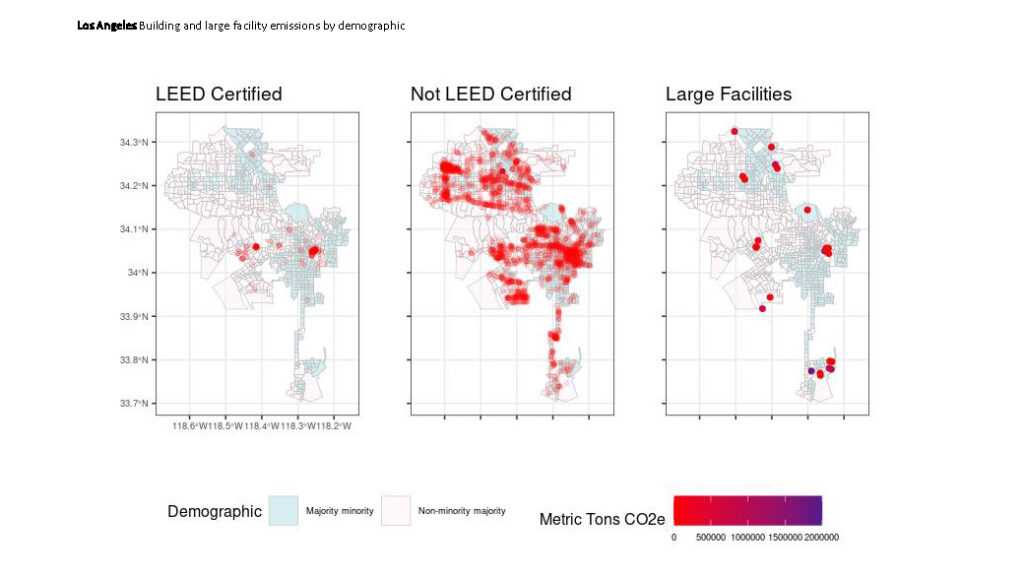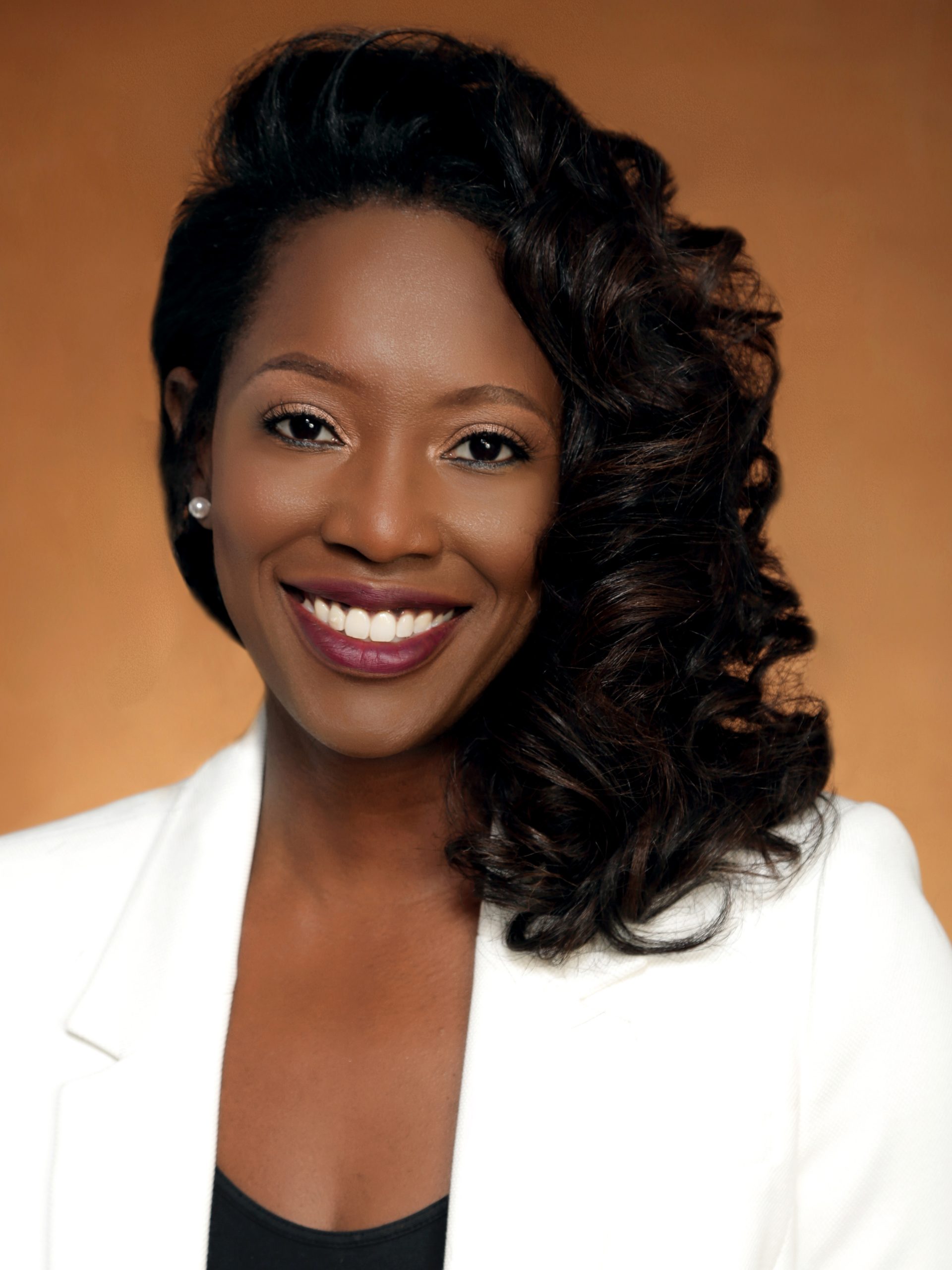My 13-year old daughter is a budding architect who appreciates the aspects of buildings that most might overlook: the structure, the materials of construction, the angles and colors. But she also has a unique perspective on how buildings can harm the people around them. Our family has driven by power plants in my husband’s home state and seen children that look like her, living each day breathing air that smells foul and almost certainly harms their health and well-being. It’s important to me that she understand this duality: buildings are the product of amazing engineering and creativity, providing spaces for people to work, learn and, of course, call home; however, buildings are also an under-recognized contributor to environmental injustice. In a recent project with IMT and the Institute for Sustainable Communities, my team and I researched this connection in more depth, and found there is much we need to do to both gather data and act on it in ways that will positively reshape this dynamic.
Historic social and political factors continue to drive health and economic disparities in low-income (LIC), communities of color (COC). A 2021 study shows that most pollution in the United States disproportionately affect racial-ethnic minorities, and this pollution is caused not only by industrial and transportation emissions, but also by energy used to power our buildings. This pollution can lead to negative health outcomes—such as asthma, cardiovascular diseases—and is worsening due to the direct and indirect effects of climate change-related weather extremes. The Environmental Protection Agency’s draft inventory of GHG emissions for 2020 states that the residential and commercial end-use sectors accounted for 27 and 16.3 percent, respectively, of carbon dioxide emissions from fossil fuel combustion in 2020. There is a need to better understand the community health impacts of the emissions from commercial and non-residential buildings, as well as the economic impacts on COC, including access to capital and to healthy, affordable building space. For these reasons, our research focused on the impacts and opportunities to advance equitable decarbonization for a subset of buildings that have been understudied: non-residential buildings, located in and providing services to low-income and/or COC.
Our team set out to uncover challenges and opportunities to advance energy efficiency and clean energy improvements in minority-owned buildings/businesses in six cities: Chicago, IL; New York, NY; Los Angeles and San Francisco, CA; Miami and Orlando, FL. Our quantitative analysis utilized a two-step methodology in order to identify:
- the current GHG emissions of buildings and large facilities in each case study city
- whether a Minority Business Enterprise was located in these buildings (a proxy for economic activity benefiting COC)
- the community context of these buildings: low-income or minority majority
- the LEED status of these buildings

In addition to this analysis, we interviewed 11 community based/environmental justice/non-profit experts working in these cities on multiple facets of the building decarbonization movement to better understand, from their perspective, opportunities and barriers to catalyze policies, tools, finance and workforce development in an effort to amplify clean energy efforts. This intentional mixture of quantitative emissions data with the qualitative wisdom of advocates and local experts helped shape the recommendations in our report.
From this exploration, the actions we believe are most critical to advancing an equitable and just building decarbonization movement are:
- Create a national database of minority-owned buildings and businesses. Without this data, which is often unavailable or available only from disparate sources, it is difficult to evaluate how economic benefits of building performance accrue to building owners of color as well as to occupants.
- Require consistent and mandatory reporting of GHGs emitted by all non-residential/commerical use buildings in communities with environmental justice concerns. This data is essential to a more complete picture of emission sources and impact.
- Expand investments—including direct investment, in-kind equity contributions, grants, subsidies, loans, and revenue-participation agreements—for clean energy efforts for minority-owned businesses and minority-owned buildings. For example, prioritize LEED Certification efforts in communities with environmental justice concerns.
- Diversify contracting & leadership in the building decarbonization field by actively creating guidelines and an outreach plan for the public sector to get more diverse businesses involved in the projects it funds.
- Require buildings to report out on Energy Equity Indicators, such as renewable energy consumed, and energy burden as compared to peer buildings in the community.
- Collect data on health outcomes along with building emissions data (at the neighborhood or census tract level) to help inform and shape mitigation and adaptation strategies to build community-level climate resilience.
- Prioritize resource deployment (i.e. financing for clean energy and energy efficiency technology) to buildings located in communities with multiple environmental justice, economic and social stressors, particularly in communities with clusters of pollution sources.
- Create a diverse workforce to meet market demand for decarbonization activities. Energy efficiency, installation, and weatherization, and similar tasks should be performed by disenfranchised, transitioning workers, minority contractors and from the impacted community.
- Build and amplify the voice and presence of Black and Brown leaders within existing national coalitions and other groups working on building decarbonization. There is a need for people of color-led, community-based, environmental justice professionals who shape solutions via leadership roles.
- Provide training to workers & decision-makers about why reducing energy use and advancing energy efficiency is important, particularly for minority building and business owners, and building owners with buildings in low-income communities, and/or communities of color that are suffering other environmental and climate challenges.
Good data is critical to inform policy, decisionmaking and resource distribution. As an example, the long-awaited, recent release of a beta version of the Climate and Economic Justice Screening Tool from the White House Council on Environmental Quality will help the federal government fulfill the objectives of the Justice40 Initiative to invest 40% of federal funding into disadvantaged communities that are marginalized, underserved and overburdened by pollution. In this case, the data has the potential to drive major actions. Combining this information with data on direct emissions from non-residential buildings would enable more targeted policy action, such as appropriate local incentives or regulations.
Our goal is for this work to not only encourage new questions, better practices and policies, but also socialize a level of accountability across the sector. We all play a role in creating cleaner, healthier communities. My hope is that when my daughter graduates from architecture school, the data will confirm that the best building designs are not only pleasing to eyes, but should be pleasing to heart, health and spirit of the communities they stand in.
Acknowledgement: The EGE2 research team of Yasmin Rottimi, a graduate intern of the Boston University URBAN Program; Monica Martinez and Chrissy Beckwith of the Ruben Strategy Group, LLC; and the community leaders and partners that we interviewed for this research.
